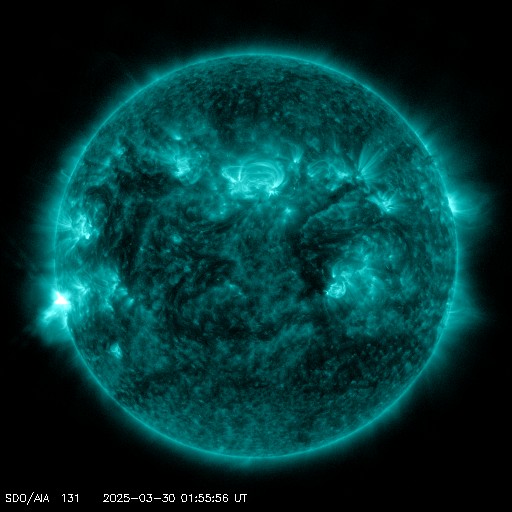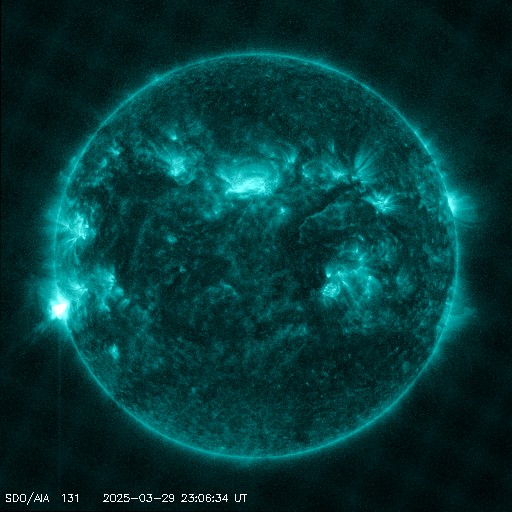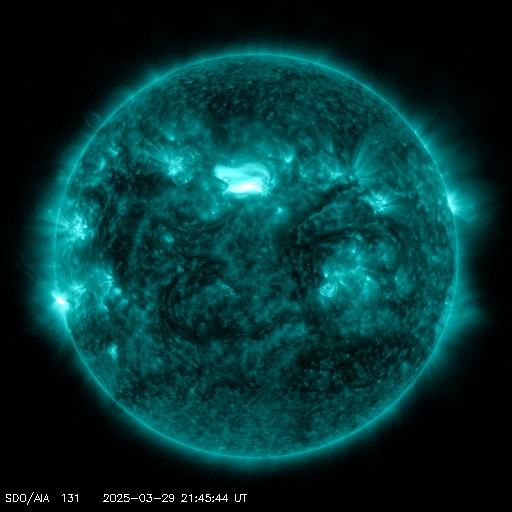Sunspot region 2253
Friday, 2 January 2015 12:55 UTC
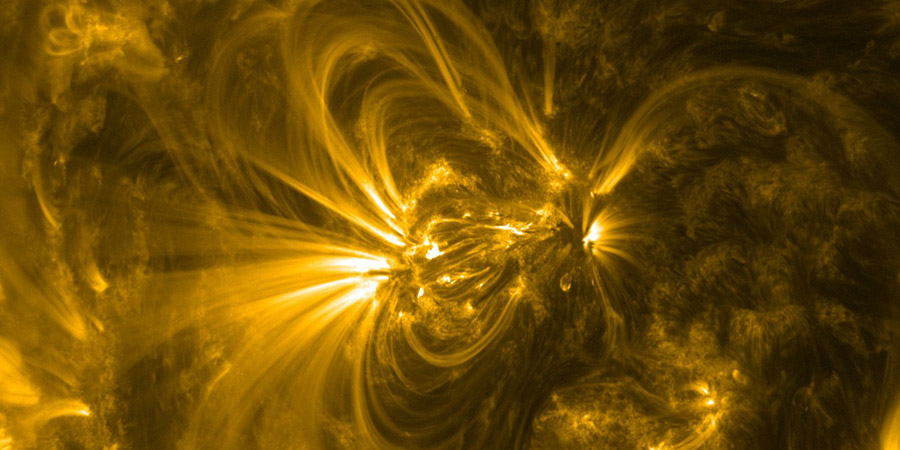
Happy new year everybody! There were no fireworks on the Sun during the past few days to welcome in the New Year. Things are actually rather quiet on our nearest star right now... or could this be over soon? Sunspot region 2253 has been developing slowly over the past few days and is now showing signs that it is also increasing in magnetic complexity. Can we expect to see the first M-class solar flare of 2015 soon?
Sunspot region 2253
Sunspot region 2253 is currently by far the most interesting sunspot region on the earth-facing solar disk. While it has yet to produce a significant solar flare, it does show signs of development both in terms of size and magnetic complexity.
Over the past 24 hours, it developed a Beta-Gamma-Delta magnetic layout. A small delta structure can be found just east of the large leader spot which is surrounded by sunspots of opposite polarity which is good news. We do however need to see continued growth of this delta spot before we can really consider it a treat for a strong solar flare as the delta itself is still not so large. We keep the solar flare chances low for now but there is potential if it continues to grow. The images below show sunspot region 2253. The area which is marked with a circle is the delta sunspot.
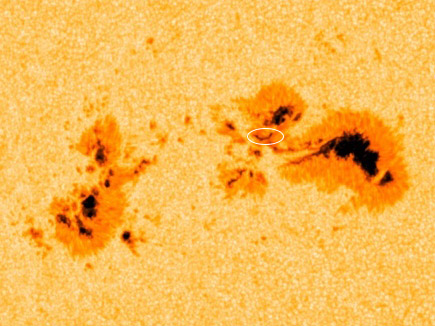
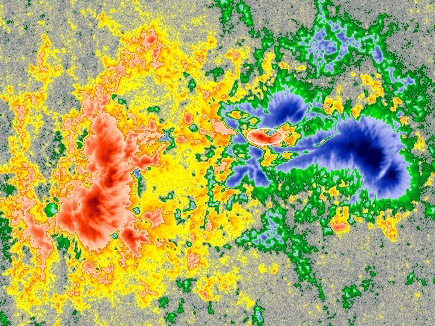
M-class flare probability for the coming 24 hours: 25% chance
X-class flare probability for the coming 24 hours: 1% chance
Solar activity will likely be at low levels in the next 24 hours with a small chance for moderate solar activity. It is worth noting that 2253 is slowly rotating into an earth-facing position so any eruption from sunspot region 2253 could lead to an earth-directed coronal mass ejection. All the other sunspot regions on the earth-facing disk are unremarkable. Any activity will likely come from sunspot region 2253. For all an overview of all the sunspot regions on the earth-facing disk right now please visit this page.
Images: NASA SDO.
Thank you for reading this article! Did you have any trouble with the technical terms used in this article? Our help section is the place to be where you can find in-depth articles, a FAQ and a list with common abbreviations. Still puzzled? Just post on our forum where we will help you the best we can!
Latest news
Latest forum messages
More topicsSupport SpaceWeatherLive.com!
A lot of people come to SpaceWeatherLive to follow the Sun's activity or if there is aurora to be seen, but with more traffic comes higher server costs. Consider a donation if you enjoy SpaceWeatherLive so we can keep the website online!

Latest alerts
02:09 UTC - Solar flare
Moderate M1.54 flare from sunspot region 4048
01:42 UTC - Radio Blackout
Minor R1 radio blackout in progress (≥M1 - current: M1.24)
Saturday, 29 March 2025
23:21 UTC - Solar flare
Moderate M1.91 flare from sunspot region 4048
22:51 UTC - Radio Blackout
Minor R1 radio blackout in progress (≥M1 - current: M1.1)
21:57 UTC - Solar flare
Moderate M1.45 flare from sunspot region 4048
Space weather facts
| Last X-flare | 2025/03/28 | X1.1 |
| Last M-flare | 2025/03/30 | M1.5 |
| Last geomagnetic storm | 2025/03/27 | Kp5 (G1) |
| Spotless days | |
|---|---|
| Last spotless day | 2022/06/08 |
| Monthly mean Sunspot Number | |
|---|---|
| February 2025 | 154.6 +17.6 |
| March 2025 | 127.5 -27.1 |
| Last 30 days | 127.5 -24.7 |



